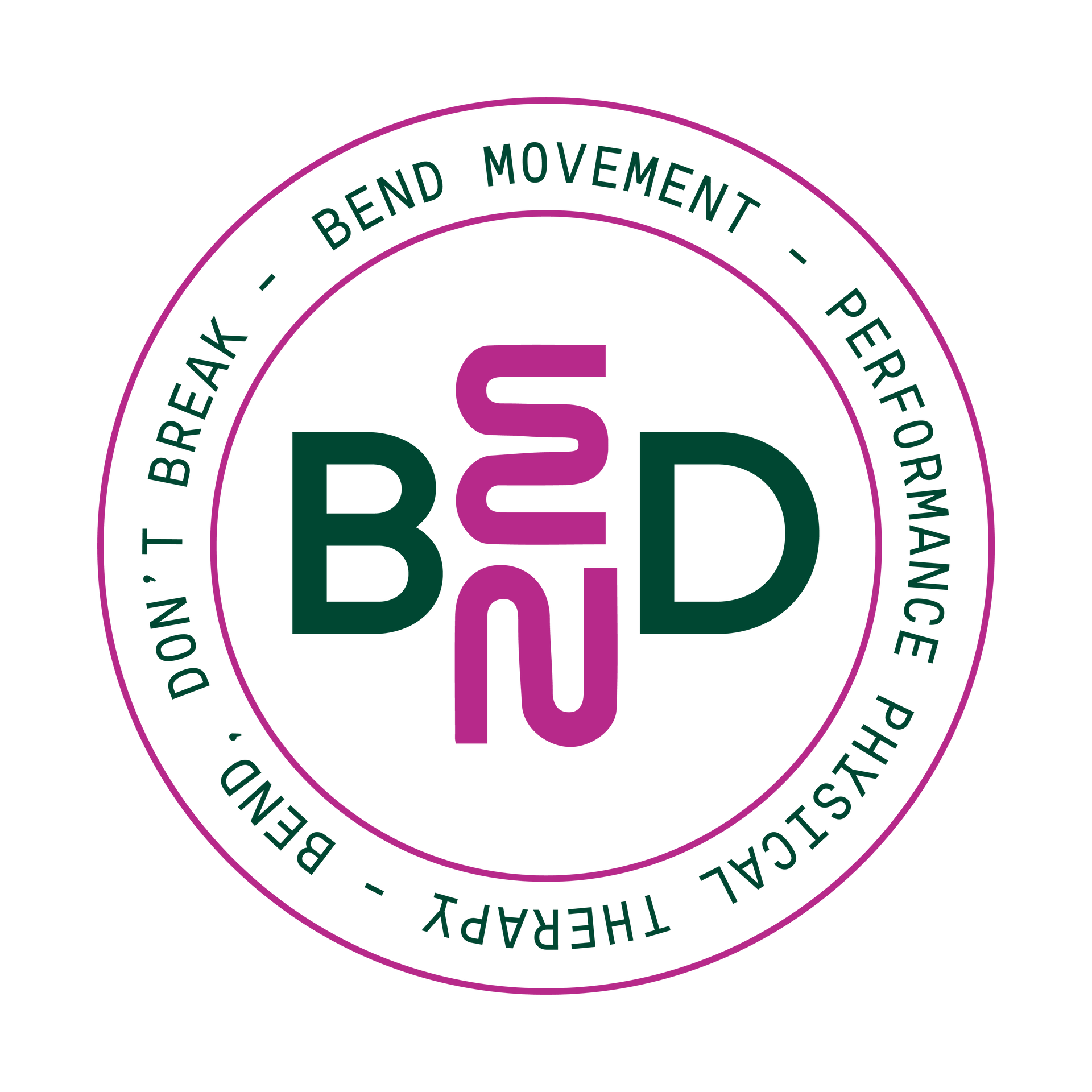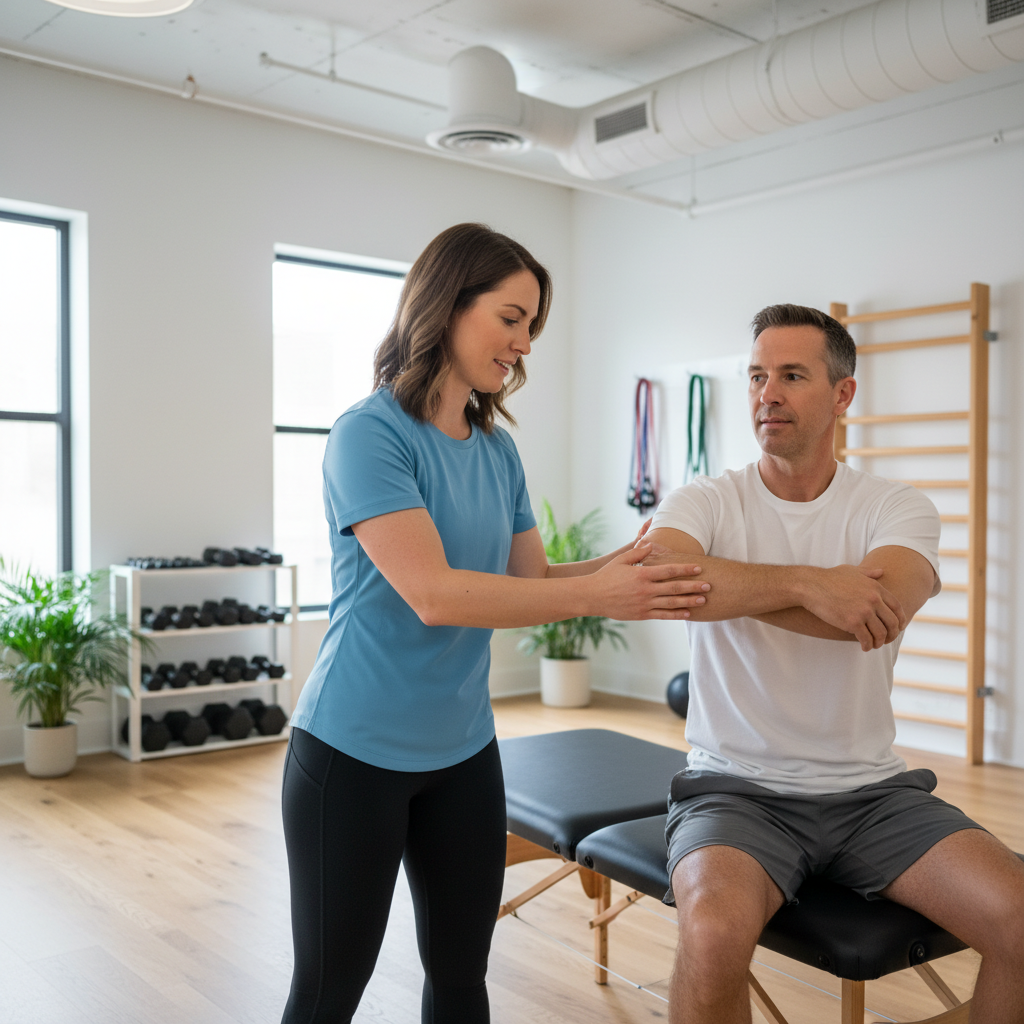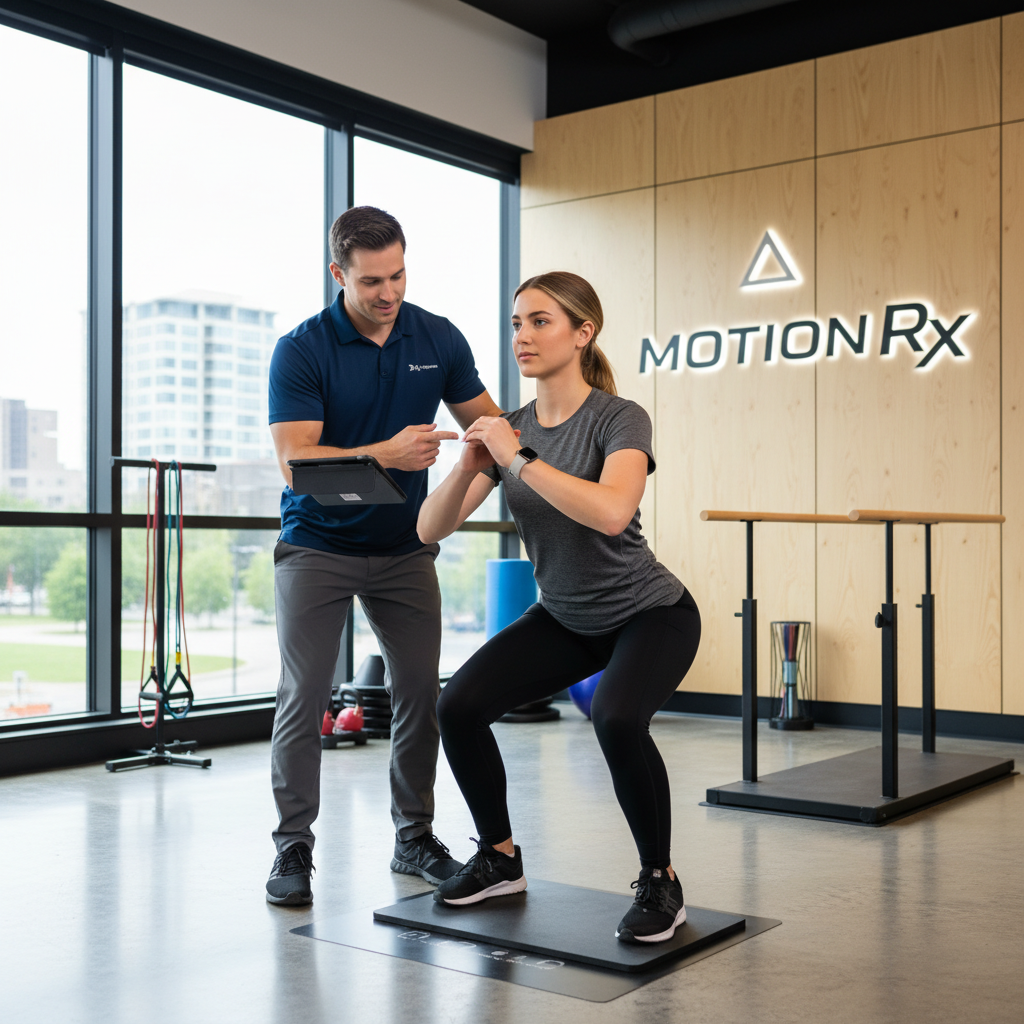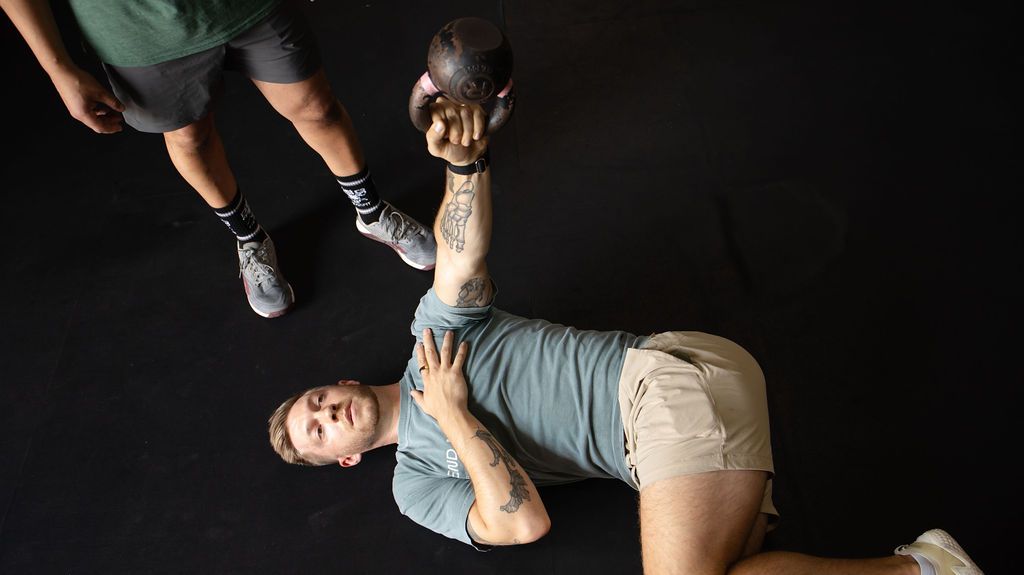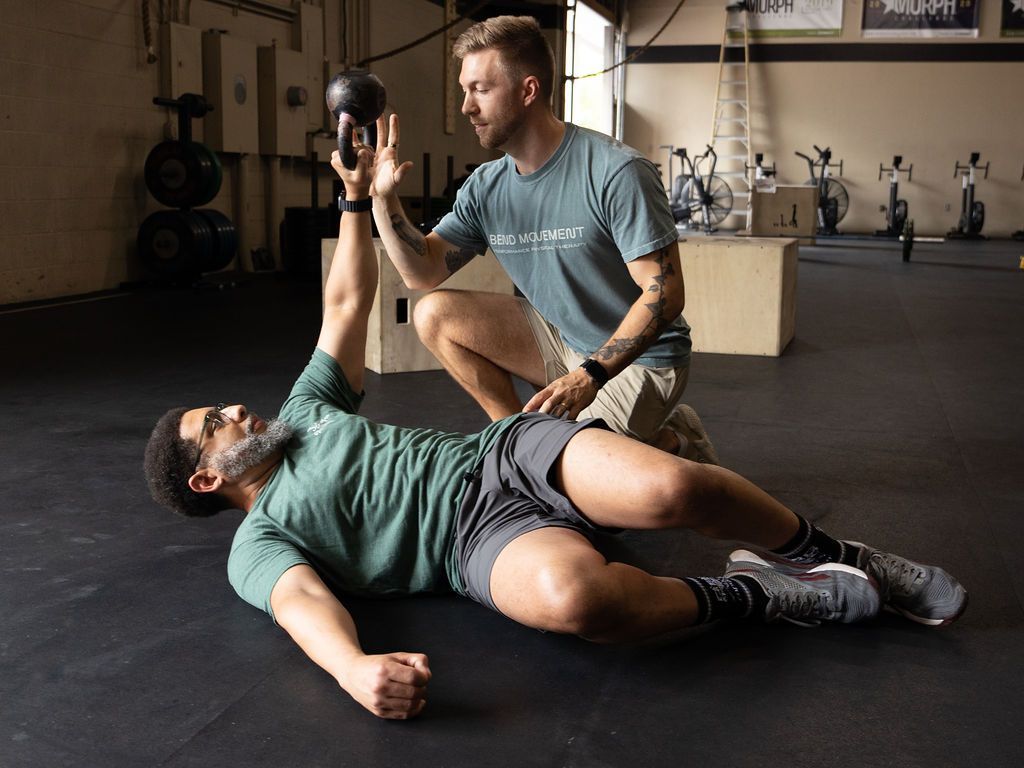Blogs
Catogories
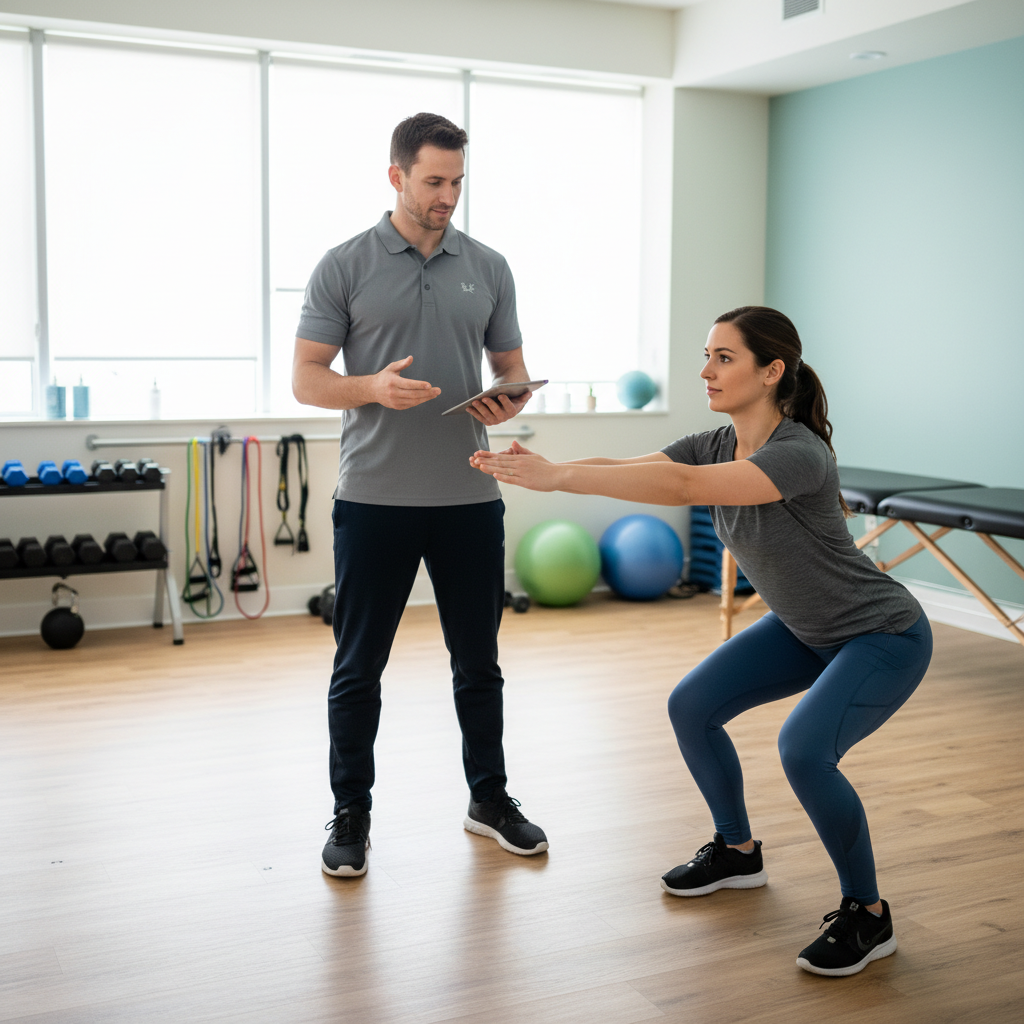
Physical Therapy in Henrico: Your Complete Guide to Recovery and Peak Performance with Bend Movement
Unlock your full potential with personalized physical therapy in Henrico, VA. Bend Movement offers one-on-one sessions, dry needling, and sports performance optimization.
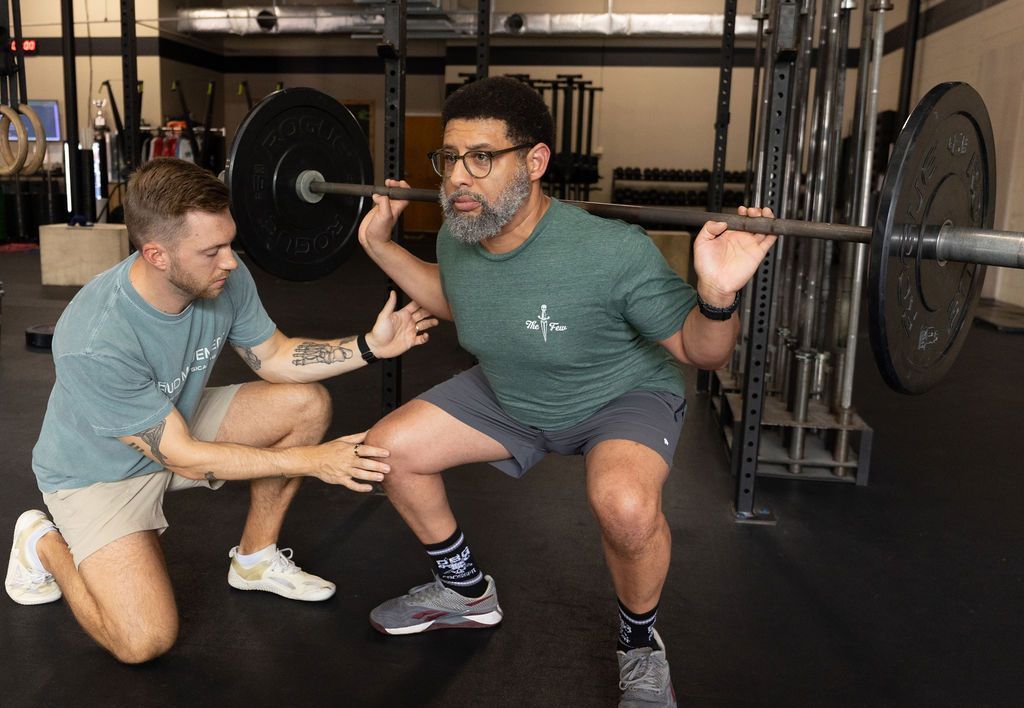
For many athletes, physical therapy is something they consider only after an injury. But limiting PT to recovery alone overlooks one of its greatest strengths — performance optimization. Whether you're competing at an elite level or training for your next weekend race, working with a sports physical therapist can help you move more efficiently, train smarter, and perform at your highest potential. READ: How Dry Needling Can Help with Chronic Pain Relief Performance gains aren’t just about adding strength or speed — they’re about improving the way your body functions as a whole. PT helps identify movement inefficiencies, address imbalances, and refine motor control, all of which can have a direct impact on performance outcomes. In a competitive environment where every second counts, investing in your movement quality can be the difference between plateauing and pushing through to your next personal best. How Sports Physical Therapy Enhances Athletic Performance Sports physical therapy isn’t just about getting you back to baseline — it’s about pushing you beyond it. At its core, performance-focused PT is designed to fine-tune the body for the demands of your sport, helping you train more effectively and compete more efficiently. A skilled sports physical therapist evaluates your unique movement patterns, joint mobility, muscle activation, and biomechanics to uncover areas where you're losing power, efficiency, or control. From there, they create a custom plan that targets those limitations through a combination of: Sport-specific strength and conditioning Mobility and flexibility work Neuromuscular training Functional movement correction These interventions aren’t general fitness routines — they’re precise, data-informed strategies to maximize your output while reducing the physical stress that leads to overuse or injury. At Bend PT in Richmond , athletes of all levels work one-on-one with clinicians who understand the demands of sport. Whether you're sprinting, lifting, cutting, or jumping, physical therapy helps ensure every movement is optimized for performance. READ: From Stiff and Stuck to Moving Freely Again: John’s Low Back Story Key Differences Between Rehab and Performance-Focused PT While both rehabilitation and performance physical therapy share a foundation in movement science, their goals — and how they’re approached — differ in meaningful ways. Rehab PT is reactive. It focuses on helping an athlete recover from an injury, reduce pain, and restore basic function. The primary goal is to get you back to where you were before the injury. Performance PT , on the other hand, is proactive. It’s built around optimizing how your body moves and functions before injury occurs. This means fine-tuning strength, coordination, stability, and efficiency to help you reach your peak — not just return to normal. In a performance-focused session at Bend PT, your therapist might analyze video of your sprint mechanics, assess how your hips load during squats, or test how your core responds under fatigue. These are the details that separate good athletes from great ones — and they’re exactly what this kind of PT is designed to improve. Simply put, rehab gets you back in the game. Performance PT helps you change the way you play it. Real Results: What Athletes Can Gain from PT at Bend PT At Bend PT in Richmond, performance physical therapy is more than just theory — it’s a results-driven process that empowers athletes to move better, train harder, and recover smarter. Here’s what athletes consistently gain from working with our team: Increased power and efficiency through refined movement mechanics Improved balance and coordination , translating to quicker reaction times and better control Enhanced mobility and flexibility that supports more fluid, injury-resistant motion Greater body awareness for smarter, more intentional training Fewer setbacks , thanks to proactive strategies that reduce injury risk These outcomes aren’t reserved for elite athletes. Runners, lifters, cyclists, and weekend warriors all benefit from a customized approach that treats their body like the performance machine it is. Whether your goal is to shave time off your mile, improve your deadlift, or stay in the game longer — sports PT provides the structure and strategy to help you get there. Choosing a Cash-Based PT Model for Better Performance Outcomes When it comes to optimizing athletic performance, time and quality matter. Cash-based physical therapy offers a level of care that’s often missing in traditional models — and that can make all the difference in your results. READ: Movement Snacks: Small Bites of Motion for a Healthier Day At Bend PT , athletes receive uninterrupted one-on-one sessions with a licensed physical therapist . There are no rushed appointments, no handoffs to aides, and no insurance constraints limiting what your body needs. This structure allows for deeper assessments, more personalized plans, and the ability to focus on performance — not just pain relief. You’ll work directly with a clinician who understands your sport, your goals, and how to help you move better with purpose. The result? A more efficient path to peak performance with fewer barriers and better outcomes. Choosing a cash-based model means choosing care that’s built around you — not a billing code.
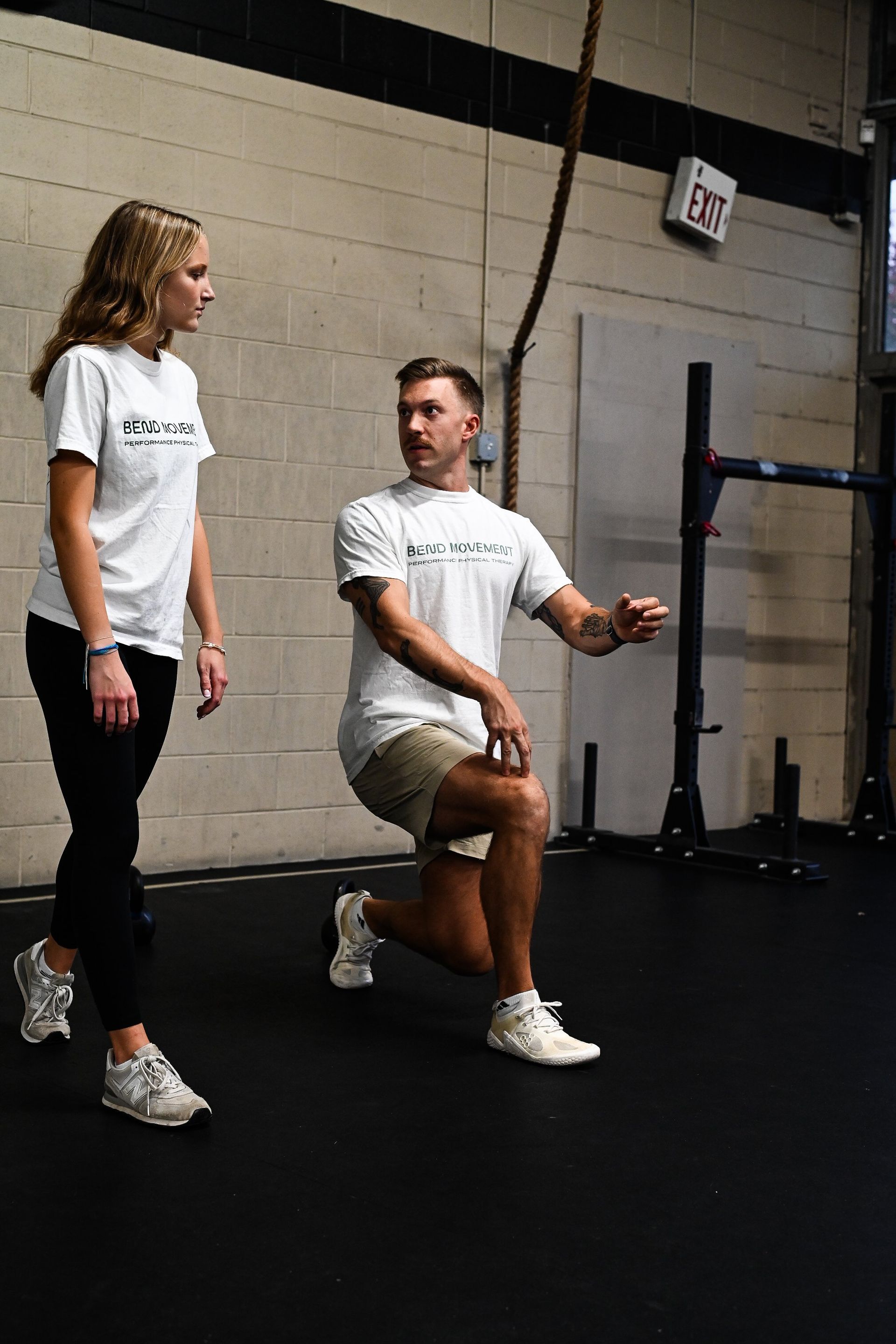
Whether you're a weekend warrior or a seasoned competitor, recovery is just as critical to your performance as training. Sports physical therapy (PT) provides a structured, science-backed approach to recovery that helps athletes regain strength, mobility, and confidence after an injury or intense performance cycle. Rather than relying solely on rest or generalized rehabilitation, physical therapy delivers a personalized plan tailored to your sport, injury history, and goals. This means faster healing, better movement patterns, and a more sustainable return to activity. READ: From Stiff and Stuck to Moving Freely Again: John’s Low Back Story Beyond treating injury, PT supports tissue healing by addressing muscular imbalances, joint restrictions, and neuromuscular coordination — all factors that affect how your body recovers and performs. Working with a physical therapist ensures you’re not just feeling better, but moving better. Common Injuries Treated with Sports Physical Therapy Athletes place unique demands on their bodies, which makes them more prone to specific injuries that require targeted care. Sports physical therapy addresses a wide range of musculoskeletal issues that can arise from training, competition, or overuse. Some of the most common conditions treated include: Sprains and strains: Soft tissue injuries, especially to the ankles, knees, and shoulders, are frequent among athletes of all levels. Tendonitis and overuse injuries: Repetitive motion in sports like running, tennis, and swimming can lead to chronic inflammation or tendon overload. Post-surgical rehab: Whether it’s an ACL repair or rotator cuff surgery, sports PT helps guide recovery and ensures a safe return to play. Back and neck pain: Poor mechanics, muscle imbalances, or collisions can lead to spinal discomfort that limits performance. Joint instability or dislocation: Common in contact sports, these injuries require neuromuscular retraining to restore stability and prevent recurrence. At Bend PT in Richmond , sports therapy goes beyond simply managing symptoms. Each injury is assessed with a detailed movement analysis to uncover root causes, helping athletes return stronger and more resilient than before. The Role of PT in Preventing Re-Injury Recovering from an injury is only half the battle — staying injury-free is where true progress lies. Sports physical therapy plays a critical role in preventing future setbacks by addressing the underlying dysfunctions that often go unnoticed during training or competition. READ: Movement Snacks: Small Bites of Motion for a Healthier Day Many athletic injuries stem from poor biomechanics, muscle imbalances, or incomplete healing. A skilled physical therapist doesn’t just treat the injured area; they assess the entire kinetic chain — from how your foot strikes the ground to how your hips and core stabilize during movement. This whole-body approach uncovers weak links that can compromise performance and lead to re-injury. Customized exercise programming is another key component. At Bend PT , athletes receive individualized training plans designed to restore functional strength, improve mobility, and build resilience in sport-specific movement patterns. This proactive approach ensures that athletes not only return to their sport safely but with a reduced risk of future injury. Consistent check-ins and progress monitoring also keep recovery on track, providing athletes with the long-term support they need to keep moving forward — not back. What to Expect from a Sports Physical Therapy Session If you’ve never worked with a sports physical therapist before, you might be surprised by how comprehensive and hands-on each session can be. Unlike standard rehab clinics, cash-based providers like Bend PT focus on one-on-one care, giving athletes the time and attention needed to make meaningful progress. At your first session, your physical therapist will perform a thorough evaluation. This includes reviewing your injury history, assessing your movement patterns, testing joint mobility and muscle strength, and identifying any compensations that may be holding you back. From there, you’ll receive a customized treatment plan that could include: Manual therapy techniques to reduce pain and improve mobility Corrective exercises to retrain movement patterns Strength training tailored to your sport Neuromuscular re-education for balance, coordination, and control Recovery tools like soft tissue work or mobility drills Each session is designed to evolve with your progress, ensuring that you’re consistently challenged and moving toward your goals. Whether you’re rehabbing from an injury or optimizing your performance, sports PT offers a clear, structured path forward. Why Choose a Cash-Based PT Clinic Like Bend PT Athletes need personalized, efficient care — and that’s exactly what a cash-based clinic like BendPT offers. Unlike traditional insurance-based models, where sessions are often rushed or limited by coverage restrictions, cash-based physical therapy allows for longer, more focused appointments tailored to your needs. READ: How Dry Needling Can Help with Chronic Pain Relief At Bend PT in Richmond, each visit is a one-on-one session with a licensed physical therapist who specializes in sports recovery and performance. This model not only improves outcomes but also provides a level of continuity and accountability that’s hard to find elsewhere. Athletes at Bend PT benefit from: Individualized treatment plans that evolve with their progress Direct access to their PT without needing a referral A collaborative environment focused on long-term health and performance Education and tools that empower athletes to take control of their recovery When you choose a cash-based provider, you're investing in a more effective and proactive approach to care — one that supports your goals, respects your time, and delivers results that matter on and off the field

From Stiff and Stuck to Moving Freely Again: John’s Low Back Story When John first came into Bend Movement Physical Therapy, he was struggling with constant low back pain. Both sitting and standing for long periods was tough. Even simple tasks like tying his shoes or standing at a concert left him stiff, uncomfortable, and frustrated. He tried to stretch it out at home, but the pain kept coming back. During his first session, we took the time to look deeper into his movement health - not just at his back, but how his whole body was moving. John had some stiffness through his hips that was putting extra stress on his spine. Our treatment included hands-on techniques, like dry needling and traction, to calm down the tightness first. Once John was feeling a little better, we shifted our focus to building strength. He worked through a customized exercise plan built for his SPECIFIC needs - not a generic, cookie-cutter program. We also checked in monthly to tweak his home program as he improved, making sure he kept moving forward without plateauing. One of the biggest differences with cash-based physical therapy is the freedom to treat the whole problem, rather than just chase symptoms. John got personalized care every step of the way, and he noticed it. Fast-forward a few months later, and John’s back to biking the Capital Trail and hasn’t had a single flare-up in over a month. Helping active adults in Richmond and Henrico get back to the things they love, without relying on band-aid solutions, is exactly what Bend Movement Physical Therapy is all about. Schedule your discovery call with us today at www.bendmvmt.com/contact

Movement Snacks: Small Bites of Motion for a Healthier Day When people think about staying active, they often imagine long workouts or trips to the gym. At Bend Movement Physical Therapy in Richmond - we love to remind our patients that your body doesn’t need an hour of exercise to feel good. It thrives off of frequent, consistent movement. That’s where “movement snacks” come in - quick bursts of motion sprinkled throughout your day. Movement snacks are simple. Think ankle circles during a Zoom call, squats while your coffee brews, or a walk around the block between tasks. These tiny bits of movement help reduce stiffness, boost circulation, and keep your joints and muscles feeling fresh. I work with a lot of people in Richmond and Henrico who live full, busy lives. Between work, family time, and errands, finding an hour to exercise isn’t always possible. But a few minutes here and there? That’s way more doable. And that’s what makes movement snacks so powerful - they actually fit into your real life. Even just standing up for a few minutes every hour, reaching overhead, or doing a few bodyweight moves can make a big difference. Over time, these small actions help prevent aches and pains while giving you more energy. I often suggest stacking movement onto habits you already have - like calf raises while brushing your teeth, or sitting on the ground and stretching while watching TV. No equipment. No fancy routine. Just small, intentional actions throughout the day. At Bend Movement Physical Therapy, I help people stay active in ways that make sense for their lifestyle. Movement snacks are one of my favorite tools to keep you feeling good, without overcomplicating things.
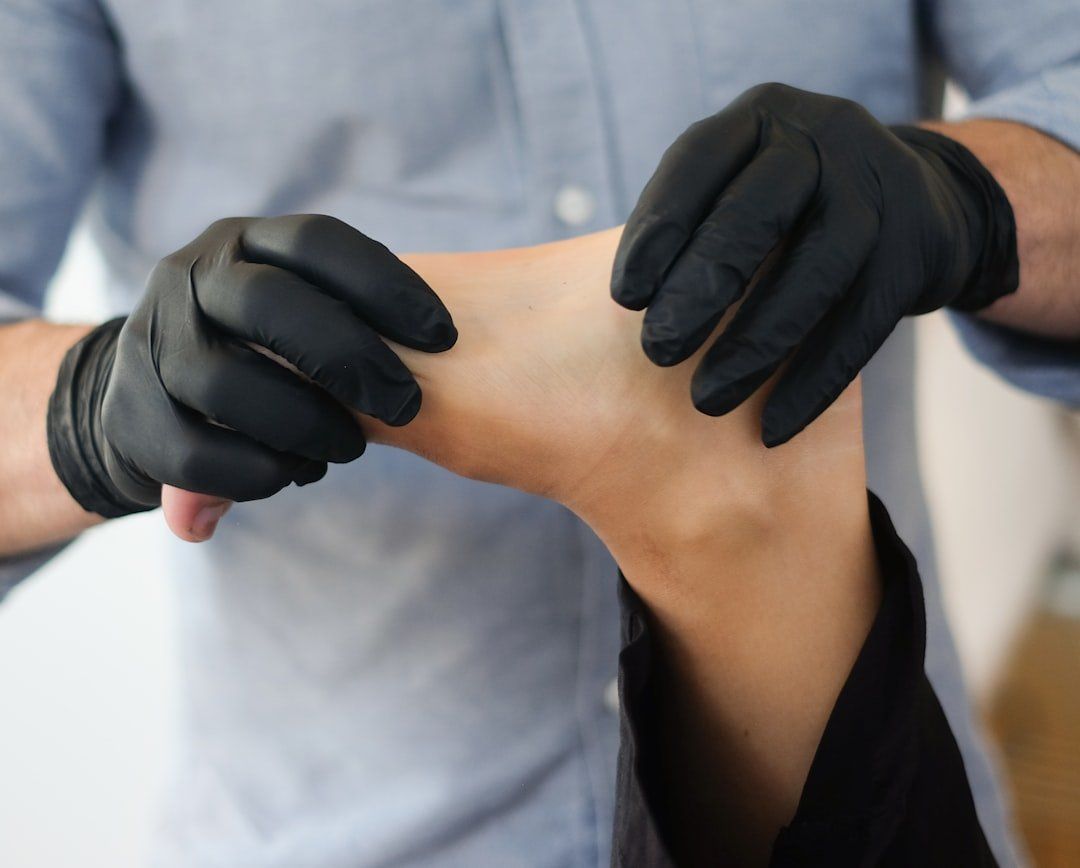
How Dry Needling Can Help with Chronic Pain Relief Chronic pain affects millions of people, making even the simplest daily activities difficult. Whether it’s persistent back pain, tension headaches, or muscle tightness that won’t go away, finding effective relief can be challenging. While traditional treatments like medication and massage offer temporary relief, they often fail to address the root cause of pain. Dry needling is an advanced technique that targets muscle knots and trigger points, helping to relieve tension and improve mobility. This innovative approach has gained popularity among physical therapists and patients alike for its ability to provide long-term pain relief. At Bend PT in Richmond, VA , we use dry needling as part of our holistic treatment plans to help patients manage and overcome chronic pain. In this article, we’ll explore how dry needling works, the science behind its effectiveness, and how it can help you regain control over your daily life. READ: The Power of Personalized Care: How Bend Movement Optimizes Performance for Richmond Athletes Understanding Dry Needling: What It Is and How It Works Dry needling is a specialized treatment technique used by physical therapists to relieve muscle pain and tightness. It involves inserting thin, sterile needles into specific trigger points—tight bands of muscle that can cause pain and discomfort. Unlike acupuncture, which is based on traditional Chinese medicine, dry needling is rooted in modern Western medicine and focuses on treating musculoskeletal issues. How Dry Needling Works When a needle is inserted into a trigger point, it stimulates a twitch response in the muscle, which helps: Release tension by resetting tight muscle fibers. Improve blood flow to the affected area, promoting healing. Reduce nerve sensitivity , decreasing chronic pain signals. The process is relatively quick, and many patients experience immediate relief. Dry needling is often combined with other physical therapy techniques to maximize its effectiveness and support long-term pain management. The Science Behind Dry Needling for Chronic Pain Dry needling is not just about relieving muscle tension—it also influences the nervous system and promotes long-term pain relief. Research has shown that this technique helps reset dysfunctional muscle patterns, reduce inflammation, and improve neuromuscular function. How Dry Needling Affects the Nervous System Chronic pain often results from an overactive pain response in the nervous system. When a dry needle is inserted into a tight muscle, it helps: Interrupt pain signals sent to the brain, reducing overall discomfort. Stimulate endorphin release , the body’s natural painkillers. Normalize nerve function , preventing muscles from staying in a constant state of tension. READ: Rediscover Freedom in Movement: How Bend Movement Empowers Richmond to Live Pain-Free Increased Blood Flow and Muscle Recovery When a muscle is tight or knotted, blood flow is restricted, leading to inflammation and prolonged pain. Dry needling helps by: Increasing oxygen and nutrient delivery to affected tissues. Reducing inflammation, which is often a key factor in chronic pain. Speeding up muscle recovery, allowing for better movement and reduced stiffness. By addressing both the muscular and neurological components of pain, dry needling provides lasting relief and improves overall function. Conditions That Benefit from Dry Needling Dry needling is a versatile treatment that can help relieve pain and improve function in a variety of chronic conditions. By targeting trigger points and restoring muscle balance, this technique is particularly effective for individuals suffering from persistent musculoskeletal pain. Chronic Back and Neck Pain Prolonged sitting, poor posture, and muscle imbalances often lead to chronic back and neck pain . Dry needling helps by: Releasing tight muscles that contribute to discomfort. Reducing tension in the upper back and shoulders. Improving spinal mobility and posture. Tension Headaches and Migraines Trigger points in the neck, shoulders, and jaw can cause or worsen tension headaches and migraines . Dry needling can: Reduce muscle tightness that contributes to headache frequency. Improve blood flow to relieve pressure and pain. Decrease stress-related muscle tension. Myofascial Pain Syndrome and Fibromyalgia Individuals with myofascial pain syndrome or fibromyalgia often experience widespread muscle tenderness and pain. Dry needling can help by: Addressing painful trigger points that contribute to overall discomfort. Reducing sensitivity in overactive nerves. Enhancing relaxation and muscle recovery. Joint and Soft Tissue Pain Conditions like tendonitis, rotator cuff injuries, and knee pain often involve underlying muscle tension that aggravates the joints. Dry needling can: Relieve muscular imbalances affecting joint movement. Reduce inflammation and stiffness. Improve overall mobility and strength. By addressing the root causes of chronic pain, dry needling provides relief for patients struggling with persistent discomfort. READ: Pain-Free Mobility: Addressing Common Sports Injuries with Bend Movement in Richmond How Bend PT Uses Dry Needling for Long-Term Pain Relief At Bend PT , we take a comprehensive approach to chronic pain management, using dry needling as part of a personalized treatment plan to help patients achieve lasting relief. Unlike temporary fixes, our goal is to address the underlying causes of pain and restore optimal movement. Personalized Treatment Plans for Every Patient Chronic pain affects everyone differently, which is why our team tailors each dry needling session to meet individual needs. Our approach includes: A detailed assessment to identify trigger points and muscular imbalances. A customized treatment plan that integrates dry needling with other physical therapy techniques. Ongoing monitoring and adjustments to ensure progress and long-term results. Combining Dry Needling with Physical Therapy for Lasting Results Dry needling works best when combined with targeted physical therapy exercises designed to improve strength, mobility, and posture. At Bend PT, we integrate: Manual therapy to enhance muscle function. Corrective exercises to retrain movement patterns. Education and self-care strategies to help patients manage pain between sessions. Success Stories and Patient Outcomes Many of our patients have found significant relief from chronic pain through our integrative approach to dry needling . Whether recovering from a long-term injury or managing daily discomfort, our goal is to help patients regain control of their health and movement. Get Started with Dry Needling at Bend PT If chronic pain is affecting your daily life, dry needling may be the solution you’ve been looking for. At Bend PT in Richmond, VA , we specialize in helping patients find lasting relief through personalized treatment plans that address the root causes of pain. Our expert team combines dry needling with hands-on physical therapy to ensure optimal results, improved mobility, and long-term wellness. Whether you’re dealing with muscle tightness, joint pain, or tension headaches, we’re here to help you move better and feel better. Ready to take the next step? Schedule a consultation with Bend PT today and start your journey to a pain-free life!
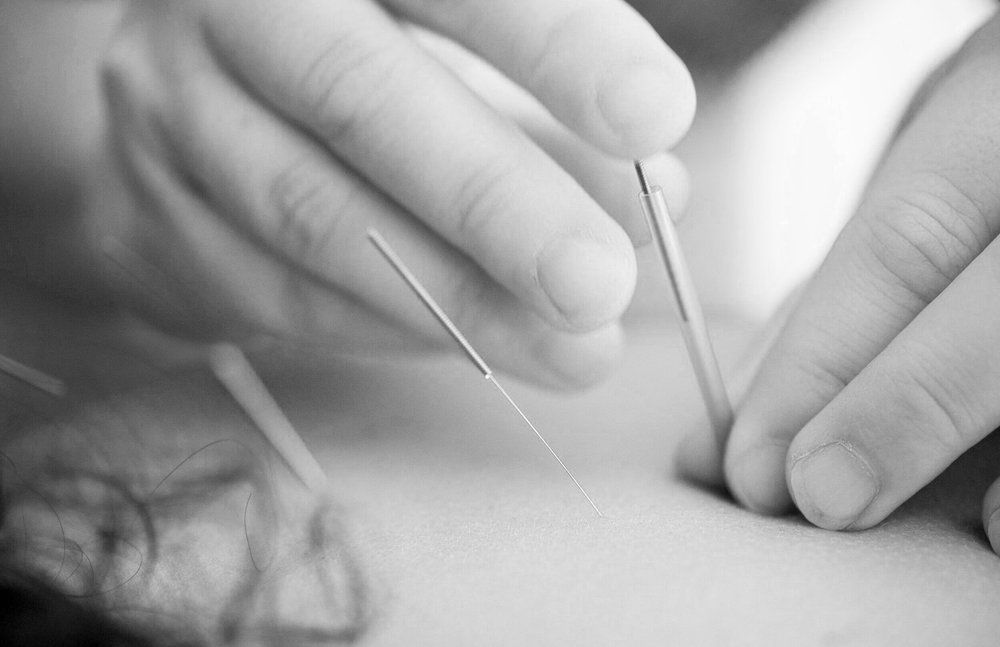
What to Expect at Your First Dry Needling Appointment in Richmond If you’re considering dry needling for pain relief or muscle recovery, you might have questions about what to expect during your first session. Many first-time patients wonder: Does it hurt? How does it work? Will I feel relief right away? Dry needling is a safe and effective technique used by physical therapists to release muscle tension, improve mobility, and reduce pain. While the idea of using thin needles to target trigger points may sound intimidating, most patients find the treatment surprisingly comfortable and beneficial. At Bend PT in Richmond, VA , we specialize in dry needling as part of a comprehensive approach to pain relief and movement optimization. This article will walk you through everything you need to know before your first dry needling appointment, so you can feel confident and prepared. READ: Rediscover Freedom in Movement: How Bend Movement Empowers Richmond to Live Pain-Free Understanding Dry Needling: How It Works and Its Benefits Dry needling is a specialized technique used to relieve muscle pain, improve mobility, and enhance recovery. It involves inserting thin, sterile needles into trigger points—tight knots within muscles that can cause discomfort and restricted movement. Unlike acupuncture, which is rooted in traditional Chinese medicine, dry needling is based on modern Western medicine and musculoskeletal science . How Dry Needling Works When a needle is inserted into a trigger point, it stimulates a twitch response , which helps: Release muscle tightness and improve flexibility. Increase blood flow to promote healing. Reduce nerve sensitivity and pain signals. Key Benefits of Dry Needling Many patients experience noticeable improvements after just one session. Dry needling can help: Relieve chronic pain from conditions like back pain, neck pain, and headaches. Improve athletic performance by reducing muscle stiffness. Speed up injury recovery by enhancing circulation and tissue healing. By targeting the root cause of pain rather than just the symptoms, dry needling offers an effective, non-invasive solution for long-term relief. READ: Pain-Free Mobility: Addressing Common Sports Injuries with Bend Movement in Richmond Preparing for Your First Dry Needling Appointment To make the most of your first dry needling session, it’s helpful to come prepared and know what to expect. Here are a few key steps to ensure a smooth and effective experience. What to Wear and Bring Comfortable, loose-fitting clothing to allow easy access to the treatment area. If your session targets the back, shoulders, or legs, consider wearing athletic wear or shorts. Bring a list of any current medications and a brief medical history to discuss with your provider. Communicating Your Symptoms and Goals During your initial consultation, your physical therapist will assess your pain levels, mobility, and overall health. Be sure to: Describe your pain or tightness in detail (e.g., location, intensity, and activities that worsen or relieve it). Discuss your treatment goals, whether it's pain relief, muscle recovery, or improved athletic performance. Medical Considerations Before Treatment Inform your provider of any medical conditions such as blood clotting disorders, recent surgeries, or pregnancy. Stay hydrated before your appointment to help your muscles respond more effectively. Eat a light meal or snack beforehand to avoid feeling lightheaded during treatment. By taking these simple steps, you can ensure a comfortable and productive dry needling session . What Happens During the Appointment Your first dry needling session at Bend PT in Richmond will be a straightforward and personalized experience. Here’s a step-by-step breakdown of what you can expect. 1. Initial Assessment Your physical therapist will begin by: Reviewing your medical history and current symptoms. Identifying specific trigger points and areas of muscle tightness. Explaining the treatment plan and answering any last-minute questions. 2. The Dry Needling Process Once the assessment is complete, your therapist will: Clean the treatment area and use thin, sterile needles to target trigger points. Insert the needles into tight muscles, causing a brief twitch response—a sign that the muscle is releasing tension. Leave the needles in place for a short period (typically a few minutes), depending on your condition. Most patients describe the sensation as a mild ache or muscle twitch, rather than pain. READ: Transforming Lives: How Bend Movement Combines Physical Therapy and Functional Fitness in Richmond 3. Immediate Effects and Sensations ome patients feel an instant sense of relief and improved mobility after treatment. Others may experience mild soreness, similar to a post-workout feeling, which typically fades within 24-48 hours. Your therapist will provide aftercare instructions to maximize results. This process is designed to help your muscles relax, heal, and function more efficiently over time. After Your Dry Needling Session: Recovery and Results Once your dry needling session is complete, your body will begin the recovery process. While many patients experience immediate relief, understanding what to expect post-treatment can help you maximize the benefits. Post-Treatment Sensations After your session, you may notice: Mild muscle soreness similar to post-exercise fatigue. Increased flexibility and reduced tension in the treated area. Temporary redness or mild bruising at the needle insertion points. These effects are completely normal and typically resolve within 24-48 hours. Tips for Maximizing the Benefits of Dry Needling To promote muscle recovery and enhance the effects of treatment, your therapist may recommend: 1. Staying Hydrated Drinking plenty of water helps flush out metabolic waste released during treatment and prevents muscle stiffness. 2. Gentle Movement and Stretching Engaging in light stretching and low-impact activities can keep your muscles from tightening up. Avoid intense workouts for the first 24 hours. 3. Applying Heat or Ice as Needed Use heat to relax muscles and improve circulation if you feel tightness. Use ice if you experience mild soreness or inflammation. READ: What’s the Point of Pain? When to Schedule Follow-Up Appointments While some patients feel relief after one session, chronic pain or muscle dysfunction often requires multiple treatments. Your physical therapist will discuss a personalized plan based on your symptoms and goals. By following these aftercare steps, you can maximize the benefits of dry needling and maintain long-term relief. Experience Expert Dry Needling at Bend PT in Richmond At Bend PT , we specialize in helping patients find lasting relief through expert dry needling treatments and personalized care. Whether you're seeking relief from chronic pain, muscle tightness, or sports-related injuries, our team is here to guide you every step of the way. Our approach goes beyond just symptom relief—we focus on identifying the root cause of pain and developing a customized treatment plan to improve mobility, reduce discomfort, and enhance your overall well-being. READ: The Power of Personalized Care: How Bend Movement Optimizes Performance for Richmond Athletes Ready to Try Dry Needling? If you're ready to experience the benefits of dry needling, our expert team at Bend PT is here to help. Schedule your first appointment today and take the first step toward long-term pain relief.
